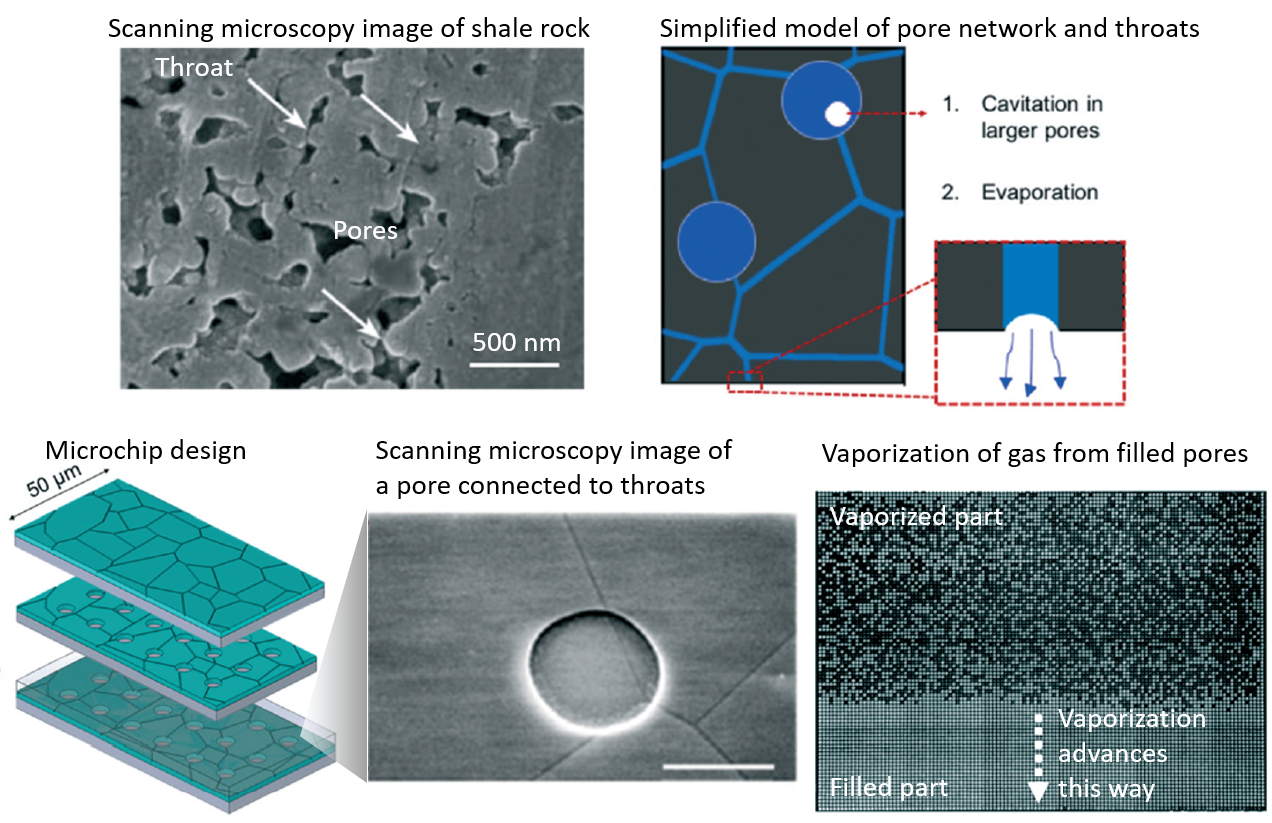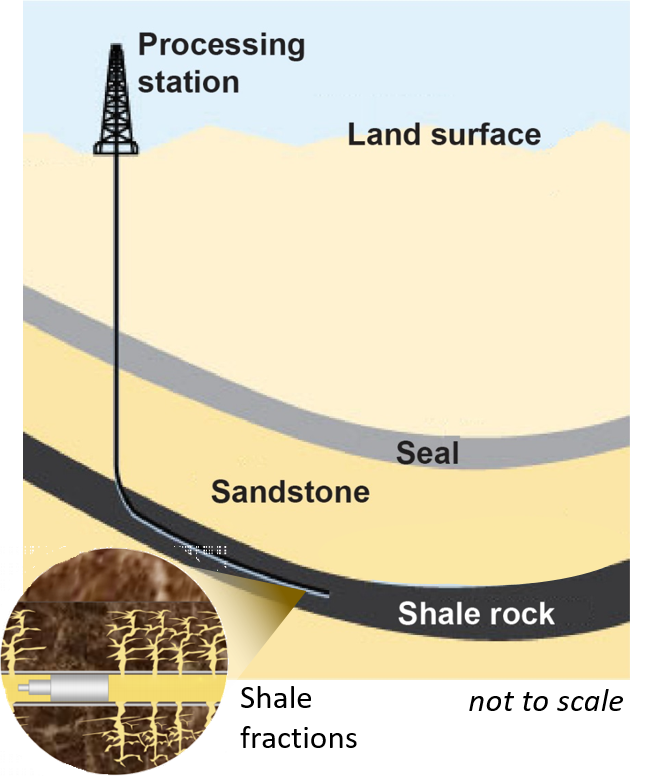Shaleis a type of fine-grained rock that contains silt,clay,mineral particles,and pores ranging from meter to nanometer scales.The high organic material content in shale rock is used in natural gas extraction,对页岩储层进行机械刺激,在孔隙中形成渗透性。A preferred stimulation method is called hydraulic fracturing,其中加压流体破裂页岩,并保持裂缝开放用于气体提取(图1)。Natural gas extraction from shale rock is a relatively new process compared to existing energy sources.它吸引了越来越多的美国和亚洲的兴趣,特别是在21世纪后,因为它是一个环境友好的替代品,其他消耗性能源。On the other hand,the gas industry currently struggles with optimizing the use of pore space and fractions for efficient extraction of the gas.在一个新开的页岩储层中,volatile components vaporize from meter to micrometer-scale pores first,使较重的成分难以进入纳米级的孔隙。Extraction of the remaining components is necessary for full utilization of the reservoirs but poses a hard-to-solve problem for the industry.
In a recent study published in片上实验室,David Sinton and co-authorsreview the current state of the technology and demonstrate a nano-scale physical model of shale with pores.The authors also study the dynamics of gas production in nanopores via imaging the system optically and developing an analytical model for gas vaporization.They first created a microchip model matching shale nanoporous matrix properties (e.g.,dominant pore sizes and permeability) (Figure 2).The microchip model contained approximately 5800 pores connected via 23000 throats,注入碳氢化合物混合物的地方。In the model,the number of the small pores (≤10 nm) is designed to be greater than the number of the larger pores (∼100 nm) to store most of the accessible hydrocarbons.这种孔径分布捕获了连接较大孔隙的纳米级喉道的影响,并与页岩生产有关。High,medium,and low过热was applied to the filled microchip to investigate the spatiotemporal dynamics of vaporization via optical imaging.An analytical model and experimental results showed that phase change (liquid to vapor) in a pore is largely independent of phase change in neighboring pores.
This work supports the hypothesis that the rapid decline in production rates is due to a shift from the large connected features to the nanoporous matrix,随着时间的推移,最小的毛孔中含有较重的部分。The authors reveal that vaporization rate slows down 3000 times thanks to the nanoscale throat bottlenecks at high temperatures,而在低温下,随着轻质组分在大孔中的蒸发,速率进一步降低。即使是10 nm和更小直径的孔,也可以通过严重的浇注输送显著地影响更大的孔的产生。The authors found that this problem can be solved by applying very low pressures,尽管目前该领域还不可用,在水力压裂后期阶段。这一发现似乎为页岩岩石能源加工领域开辟了一条新的道路。

图2。Close up view of shale rock,the description of how the evaporation works,and the description of the microchip operation.
下载免费的完整文章*click the link below:
Arnav Jatukaran,俊杰中Ali Abedini,阿泰娜·谢巴蒂安,Yinuo Zhao,哲慧金Farshid Mostowfi和大卫·辛顿
Lab Chip,2018,芯片上的实验室文章
多伊:10.1039/c8lc01053f
*Article free to read until 7th May 2019
布库古古斯库是荷兰特温特大学中尺度化学系统组的研究员。Her research interests include the development of microfluidic devices for quantitative analysis of proteins from single-cells,下一代测序,compartmentalized organ-on-chip studies,在微型天平上对水进行脱盐。












